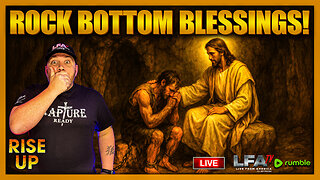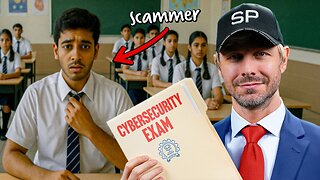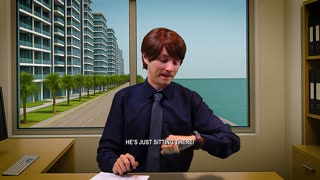Premium Only Content

GTA V - July 2023 Tech Analysis on Xbox Series S/X (GAMEPASS) and PS5 - Ray Tracing and 4K
Analysis of performance and image quality of GTA V on Xbox Series X/S and PS5.
If you're interested in getting to know the game better, watch this video on a partner channel and see a little more running in the Xbox Series S:
Meu Series S gameplay: youtu.be/4R_ZiaePtVE
Index:
Intro 00:00
Frame Rate 00:14
Resolution 02:19
Reflections 06:37
Frame Rate 09:09
Shadows 11:14
Textures 13:46
Frame Rate 16:17
Loading 18:22
Xbox Series S Tech Specs 18:52
Xbox Series X Tech Specs 19:02
PS5 Tech Specs 19:12
Technical dictionary:
- AMD FidelityFX™ Super Resolution (FSR):
FidelityFX Super Resolution (FSR) is used to upsample an input image into a higher resolution. There are two versions of FSR with distinctive upscaling technique and image quality.
FSR 1 is a spatial upscaler based on the Lanczos algorithm* requiring an anti aliased lower resolution image.
FSR 2 and 2.1 is a temporal upscaler based on a modified Lanczos* requiring an aliased lower resolution image and utilising the temporal data (such as motion vectors and frame history) and then applies its own anti aliasing pass which replaces the game's temporal anti-aliasing solution.
Quality Preset Scale Factor Render Scale
Performance 2.0x 50.0% (e.g. for 4k: 1080p upscale to 2160p with FSR)
Balanced 1.7x 58.8% (e.g. for 4k: 1270p upscale to 2160p with FSR)
Quality 1.5x 66.6% (e.g. for 4k: 1440p upscale to 2160p with FSR)
* The Lanczos algorithm is an iterative algorithm invented by Cornelius Lanczos that is an adaptation of power methods to find eigenvalues and eigenvectors of a square matrix or the singular value decomposition of a rectangular matrix. It is particularly useful for finding decompositions of very large sparse matrices.
- Cube Mapping Reflections:
A Cubemap is a collection of six square textures that represent the reflections on an environment. The six squares form the faces of an imaginary cube that surrounds an object; each face represents the view along the directions of the world axes (up, down, left, right, forward and back). Cubemaps are often used to capture reflections or “surroundings” of objects; for example skyboxes and environment reflections often use cubemaps.
- Screen Space Reflections (SSR):
Screen space reflections (SSR): a more expensive technique that traces reflection rays in screen space (as opposed to world space in e.g. ray tracing). This is done for each rendered pixel of the reflected surface, using the surface normal and scene depth.
The disadvantage is that objects not captured in the rendered frame cannot appear in the reflections, which results in unresolved intersections and incomplete reflection image.
- Ray-Traced Reflections
Ray-Traced Reflections is a more accurate ray-traced solution to Screen Space Reflection technique (that traces reflection rays in screen space), ray tracing traces reflection rays in world space.
The disadvantage of the technique using ray tracing is the need for a dedicated hardware for accelerating the calculations needed to perform the feature.
- Shadow Mapping
Shadow mapping or shadowing projection is a process by which shadows are added to 3D computer graphics. This concept was introduced by Lance Williams in 1978, in a paper entitled "Casting curved shadows on curved surfaces."[1] Since then, it has been used both in pre-rendered and realtime scenes in many console and PC games. Shadows are created by testing whether a pixel is visible from the light source, by comparing the pixel to a z-buffer or depth image of the light source's view, stored in the form of a texture.
- Simple Shadow Mapping
Simplest possible implementation of Shadow Mapping, without any smoothing or additional features.
- Soft Shadows Mapping
Soft shadows are typically rendered in games by using shadow mapping and Percentage Closer Filtering with a uniform kernel size. The Percentage-Closer Soft Shadows (PCSS) algorithm computes a variable kernel size based on the distance between the relative position of the receiver point, an approximation of the blocker, and the area light.
- Ray-traced Shadows
Ray-traced shadows are generated by tracing the path of rays sampled from a light source. Ray-traced shadows are more accurate than shadow-mapped shadows. All ray-traced shadows are world space shadows.
- Unreal Engine 5 Lumen
Lumen is Unreal Engine 5's fully dynamic global illumination and reflections system that is designed for next-generation consoles, and it is the default global illumination and reflections system. Lumen renders diffuse interreflection with infinite bounces and indirect specular reflections in large, detailed environments at scales ranging from millimeters to kilometers.
-
 LIVE
LIVE
Matt Kohrs
11 hours agoStock Market Open: BTFD 🚀🚀🚀 || Live Trading Futures & Options
648 watching -
 LIVE
LIVE
Wendy Bell Radio
5 hours agoThe Way We Were
7,778 watching -
 1:00:54
1:00:54
Chad Prather
15 hours agoHow True Greatness Kneels Down
43.9K12 -
 LIVE
LIVE
Crypto Power Hour
1 hour ago $0.27 earnedU.S. Healthcare & Blockchain Solutions
133 watching -
 LIVE
LIVE
LFA TV
12 hours agoLIVE & BREAKING NEWS! | WEDNESDAY 10/15/25
2,738 watching -
 15:23
15:23
Producer Michael
21 hours agoINSIDE AL CAPONE'S BULLETPROOF 1928 CADILLAC
32.3K5 -
 11:06
11:06
Scammer Payback
18 hours agoScammer Fails Tech Test...Gets His Computer Absolutely Destroyed
16.9K1 -
 8:45
8:45
Millionaire Mentor
19 hours agoDevin Nunes SHOCKED Everyone After EXPOSING The Deep State’s Dirty Secret
20.5K7 -
 2:01:40
2:01:40
BEK TV
1 day agoTrent Loos in the Morning - 10/15/2025
19.1K1 -
 2:53
2:53
OfficialJadenWilliams
18 hours agoWhen GTA 6 is TOO detailed...
21.6K2